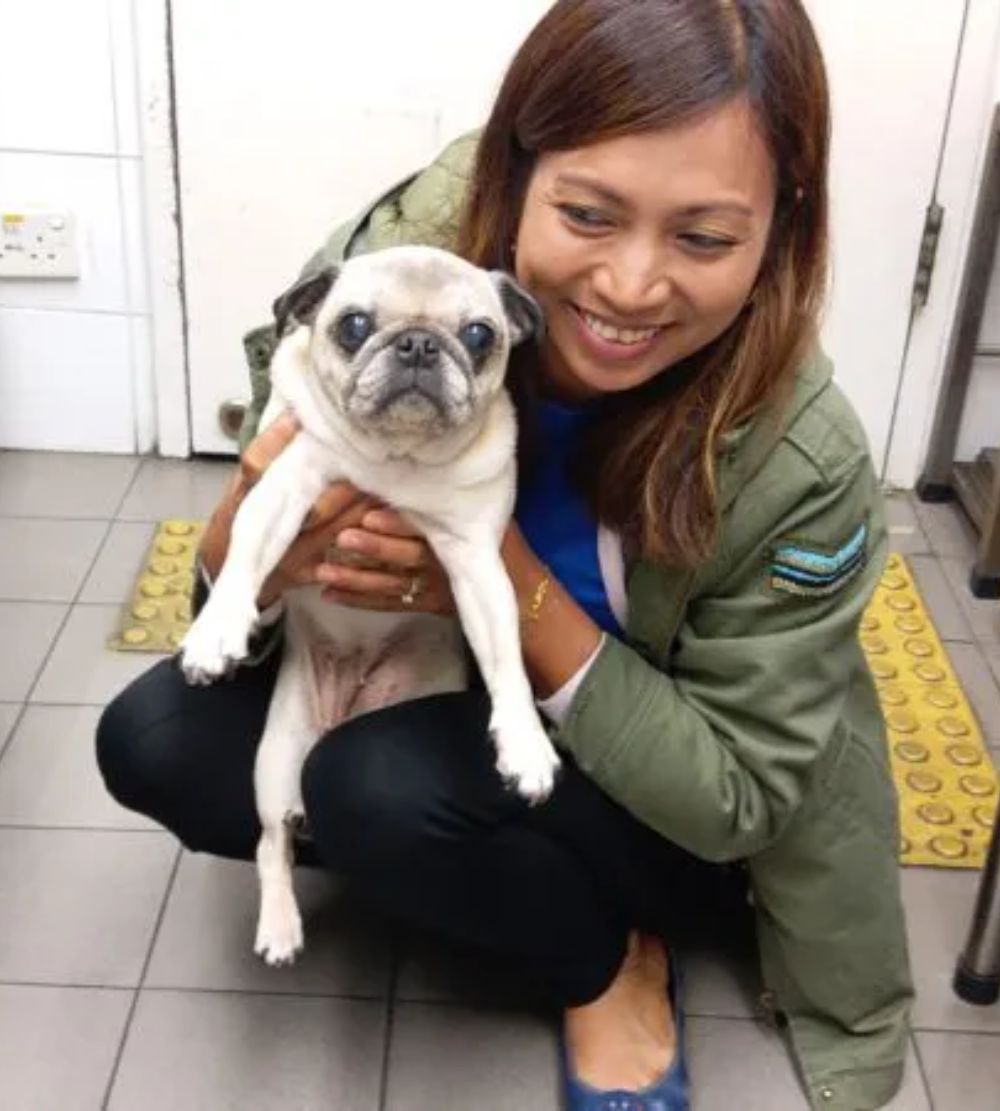Are you planning a move to Europe from Singapore? Imagine strolling through the charming streets of Paris, the vibrant squares of Brussels, or the picturesque canals of Amsterdam with your beloved pet by your side. Relocating to a new country is always an adventure, and having your furry friend with you makes it even more special. To ensure a smooth transition for both you and your pet, it’s essential to follow the correct import procedures.
The great news is that, if all import steps are meticulously followed, there is no quarantine required for cats and dogs entering the European Union from Singapore. We’ve compiled a detailed guide to help you navigate the process of bringing your dog or cat to the EU.
Let’s dive into our guidelines to help you prepare for a seamless and successful move.
Understanding EU Pet Import Regulations
The EU has stringent regulations to safeguard animal health and prevent the spread of diseases. Familiarizing yourself with these rules is essential for a hassle-free relocation.
Microchip Identification
Requirement: All pets must be microchipped before entering the EU. The microchip should comply with ISO 11784/11785 and must be 15 digits long.
Verification: Ensure that your pet’s microchip is functioning correctly by having it scanned at your vet’s office. This step is crucial, as microchip failure can result in entry delays or refusal.
Rabies Vaccination
Timeline: Your pet must be vaccinated against rabies at least 30 days before entering the EU, but not more than 12 months prior to travel. This ensures that the vaccination is effective and within the acceptable timeframe.
Documentation: The vaccination must be documented in your pet’s passport or health certificate issued by an accredited veterinarian. Ensure that the vaccine is recognized and approved by the EU.
Pet Passport
Purpose: A pet passport includes information about your pet’s microchip, rabies vaccination status, and other health details. It serves as a record of your pet’s health and travel history.
Issuance: Obtain the pet passport from a veterinarian authorized to issue such documents. This passport must be presented upon entry into the EU. EU pet passports are only available in the EU, so to relocate into the EU, other vaccination documentation proof is equally acceptable e.g. pet vaccination cards or dog and cat vaccine certificates in letter format, as long as they are signed and prepared by a veterinarian and all the other identifying and professional information is also included correctly.
Tapeworm Treatment
Requirement: Tapeworm treatment is needed if travelling to Finland, Ireland, Northern Ireland, Malta or Norway. It is not required for the other EU countries.
While not necessary for all EU countries, if you’re moving to the UK, your pet must undergo tapeworm treatment. This treatment must be administered by a vet within 120 hours to 24 hours before entering the UK.
Documentation: Ensure that the treatment is documented in your pet’s passport or health certificate.
Which are the EU countries (full list)
The EU countries are: Austria, Belgium, Bulgaria, Croatia, Republic of Cyprus, Czech Republic, Denmark, Estonia, Finland, France, Germany, Greece, Hungary, Ireland, Italy, Latvia, Lithuania, Luxembourg, Malta, Netherlands, Poland, Portugal, Romania, Slovakia, Slovenia, Spain and Sweden.
Preparing Your Pet for the Move
Effective preparation is key to ensuring your pet’s well-being during the relocation process. Here’s how you can prepare:
Schedule a Veterinary Check-Up
Health Check: Schedule a comprehensive health check with your veterinarian well in advance of your move. This includes assessing your pet’s general health, updating vaccinations, and addressing any potential health issues.
Obtain Necessary Health Certificates
Purpose: The health certificate is essential for customs clearance and entry into the EU. It must include details about your pet’s microchip, rabies vaccination, and overall health.
Requirements: Ensure that the health certificate is issued no more than 10 days before travel. It must be completed by a vet authorized by the government and may need to be endorsed by a government agency.
Travel Arrangements
Proper travel arrangements are crucial for your pet’s safety and comfort. Here’s what you need to consider:
Booking the Flight
Direct Flights: Opt for direct flights whenever possible to minimize stress and travel time for your pet. Direct flights also reduce the risk of delays and complications.
Airline Policies: Choose an airline experienced in handling pet travel. Confirm their policies regarding pet transportation, including crate requirements and in-flight care.
Choosing the Right Travel Crate
IATA Standards: Use an IATA standard travel crate that meets international standards for pet travel. The crate should be well-ventilated, secure, and comfortable for your pet.
Crate Preparation: Label the crate with your contact information, and include familiar items such as your pet’s bedding to provide comfort during the journey.
Ensuring Hydration and Comfort
Water Supply: Provide a water bottle or bowl in the crate to keep your pet hydrated throughout the flight.
Comfort Items: Include your pet’s favourite bedding to help them feel secure and comfortable during the trip. The airlines rule that cannot have any toys that could be a choking hazard or could be considered as an object that something could be smuggled in.
Arrival and Settling In
Once you arrive in the EU, several steps must be followed to complete the relocation process and help your pet adjust to their new environment.
Customs Clearance
Documentation: Present all required documents, including the pet passport, health certificate, and any additional paperwork, to customs officials upon arrival.
Inspection: Your pet may be inspected by customs authorities. Ensure that all documentation is complete and accurate to avoid delays.
Helping Your Pet Adjust
Settling In: Create a comfortable and familiar space for your pet in your new home. Introduce them to their new environment gradually to reduce anxiety.
Routine: Establish a routine for feeding, exercise, and playtime to help your pet adapt to their new surroundings.
Additional Tips for a Smooth Relocation
To ensure a successful relocation and a smooth transition for your pet, consider the following additional tips:
Plan Ahead
Preparation Time: Start the relocation process as early as possible to allow ample time for vaccinations, documentation, and travel arrangements.
Regulations: Stay informed about the latest EU pet import regulations and any changes that may affect your move.
5 day rule
Pet owners must travel to the EU within five days of their pet’s arrival to avoid the move being labeled as a “commercial” shipment. This is often referred to as the “5-day rule” and applies to all countries in the European Union. If a commercial move, the documentation is different and some rules and taxes are different.
Work with a Reputable Pet Relocation Service
Professional Assistance: For professional pet relocation services from Singapore to Europe, contact Ferndale Kennels. We offer expert assistance with booking flights, handling documentation, and ensuring compliance with all relevant regulations.
Experience: With 30 years of experience in international pet relocation, you can trust us to handle your pet’s journey with the utmost care and expertise. Choose us for a smooth and professional relocation experience.
Conclusion
Relocating your pet from Singapore to the EU involves careful planning and adherence to specific regulations. By understanding the requirements, preparing thoroughly, and working with experienced professionals, you can ensure a smooth and stress-free relocation for your furry companion. Prioritize your pet’s health and comfort throughout the process, and enjoy the exciting new chapter in the EU with your beloved pet by your side.
Pet Relocation Services From Singapore to EuropeReady to make your pet’s move to the EU smooth and stress-free? Our expert team specializes in guiding you through every step of the relocation process, from health certificates and vaccinations to specialized tests and import regulations. We ensure your furry friend arrives safe and happy at their new European home. Contact us today for personalized assistance and start your pet’s journey with confidence! |
Frequently Asked Question
What is a Pet Passport?
A pet passport is a document that allows pets to travel between countries. It includes crucial information about the pet, such as their microchip number, vaccination history, and health status.
Is quarantine required for pets arriving from Singapore to the EU?
No, if all import regulations are followed correctly, there is no quarantine required for cats and dogs entering the EU from Singapore.
What mistakes should you avoid when moving pets to the EU?
- Incomplete Documentation: Ensure that all required documents are not only gathered but also accurately filled out. This includes veterinary certificates, proof of vaccinations, and any other necessary paperwork. Incomplete or incorrect documentation can lead to delays or even denial of entry.
- Timing Issues: Pet relocation involves specific timelines for vaccinations and health checks. For instance, rabies vaccinations often need to be administered within a certain timeframe before travel, and pets may need to undergo a waiting period before entering the EU. Failing to adhere to these timelines can result in the need for additional paperwork or delays.
- Ignoring Airline Policies: Different airlines have different policies for pet travel, including crate requirements, size limitations, and fees. It's essential to check and follow these policies closely to avoid complications at the airport. Ensuring that your pet’s travel crate meets airline standards and that all necessary arrangements are made will help facilitate a smoother travel experience.


